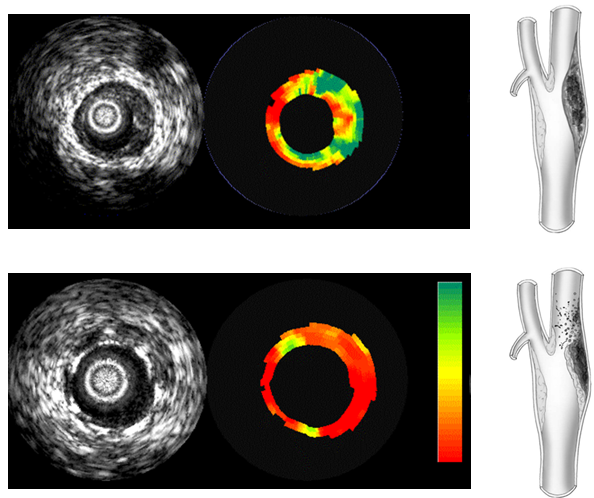Le projet est axé sur le développement d'outils technologiques de haut niveau combinant des approches biologiques, biomécaniques et d'imagerie des tissus au cours du processus de vieillissement.
Deep soft tissue ageing
Leader Work package : S. Avril
Contacts locaux : A. Belli, D. Mitton
Contacts cliniques : J.P. Favre, V. Gautheron
Context and objectives
The objective is to characterize in vivo the material properties of deep soft tissues such as blood vessels, muscles, veins... and to analyze the effects of age on these properties. This requires identifying sophisticated mechanical models linking the mechanical behavior to the biological composition and microstructure of the tissues. The variability of mechanical properties from one patient to another, affected by patient behavior (food, smoking, drugs, alcohol…).
To reach this goal, the methodology is to develop tools combining medical imaging to the most advanced mechanical models and inverse methodologies for the in vivo mechanical identification of tissues. The development of such tools is an exciting challenge because in vivo tests providing accurate mechanical properties of tissues do not currently exist. These mechanical properties are essential for feeding the numerical models that help physicians to understand age-induced pathologies affecting the soft tissues.

Élastographie ultrasonore intravasculaire : imagerie de la rigidité des plaques d'athérome dans les artères
In vivo measurements of microstructural ageing effects
Growth and remodeling of soft tissues is a major process for the tissue to adapt to biochemical or biomechanical aggressions. This also includes natural modifications of the microstructure occurring with age, which affect the mechanical properties and induce residual stresses.
The current project will characterize in vivo the tissues of patients at different times of their life. Moreover, patients who need surgery (for instance removal of a tumor, of an aneurysm at the thoracic aorta or of a plaque at the carotid artery) will be included in a clinical study for ex vivo analysis of their tissues, in order to highlight the relationship between the tissue histology and its mechanical properties in vivo.
Biomechanical behavior
Living deep soft tissues are metabolically active and exhibit mechanical properties which depend on the environment, strain rate and strain range. Due to this process, tissue has a hierarchical structure which governs is mechanical behavior. By choosing the scale or size of the tissue samples, it is often possible to model the tissue by an orthotropic or isotropic law. The aim of this task is to determine the representative volume element to create a mathematical model of the tissue system that we are characterizing.
In vivo identification methodology
Prediction of in vivo response of these tissues when specific loadings (natural: heart beat... or external: compression ...) are applied to the patient is one of the exciting challenges. This process required 3D images measurement of the undeformed and deformed tissues which will be achieved using an ultrasonic system. These systems provide images with a spatial resolution of 0,1 to 1 mm. Using this data, the identification strategy, which consists in calibrating a mechanical finite element law (viscoelasticity, anisotropy...) will allow to analyze the effects of age on the mechanical behavior. Based on this approach, a diagnostic tool for deep tissues ageing will be developed.